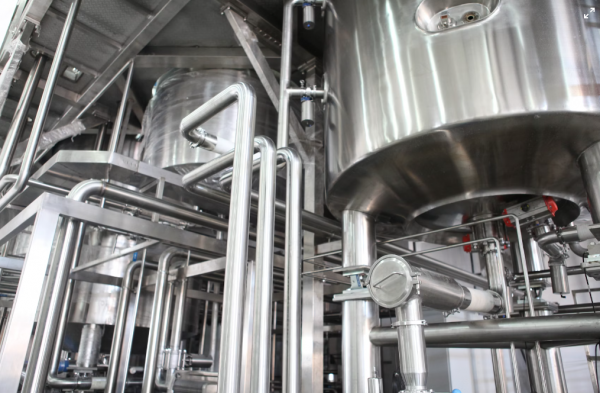-
About
-
Our Brand
-
Products
-
Community
Community
Blog
Blog
Grade Families and properties of Stainless Steel
- Writer
- STEELTOPIA
- Date
- 23-09-08
Stainless steel is a term that encompasses various types of corrosion-resistant steel containing a minimum of 11% chromium. The properties of this steel change by adjusting the chromium content and adding other elements like nickel, molybdenum, titanium, niobium, and more.
These diverse stainless steel grades are defined according to international standards, and each grade belongs to one of five stainless steel families. These families are named based on their metallurgical microstructure, and the five groups are Austenitic, Ferritic, Duplex, Martensitic, and Precipitation Hardening.

1. Austenitic Stainless Steels
When nickel is added to stainless steel in sufficient quantities, it alters the microstructure to form "austenite."
Around 70% of commercially produced stainless steel falls into the austenitic category. The most prevalent austenitic stainless steel grade is 304 (1.4301). Globally, 304 stainless steel accounts for over 50% of stainless steel usage. It's commonly referred to as "18/8," which indicates its average composition of 18% chromium and 8% nickel. Interestingly, the term "18/8" is sometimes used broadly for austenitic stainless steel, even when the actual composition differs significantly.
Features of austenitic stainless steel:
- Exceptional corrosion resistance
- Non-magnetic in its annealed state
- Readily work-hardened through cold work
- Unresponsive to heat treatment for hardening
- Exhibits ductility and ease of forming
- Excellent weldability
- Hygienic and easy to clean
- Performs well at high temperatures
- Demonstrates excellent performance at low temperatures
Apart from 304 stainless steel, other common austenitic grades include the widely-used marine-grade 316 stainless steel and the machining bar grade 303 stainless steel.
2. Ferritic Stainless Steels
Due to the lack of other alloying elements, ferritic stainless steel is primarily known as pure chromium steel. These steels typically have a chromium content ranging from 12% to 18%, and their carbon content is very low.
Characteristics of ferritic stainless steel:
- Moderate corrosion resistance
- Excellent resistance to stress corrosion cracking
- Magnetic properties
- Does not harden through heat treatment
- Typically used in the annealed condition
- Generally poor weldability for most grades
- Excellent cold workability
As mentioned earlier, its limited weldability restricts its use, and it is primarily employed in applications such as construction materials, sinks, household appliances, and architectural trim. Additionally, it is widely used in forms like liners, decking, plates, spillways, chain conveyors, dust frame extractors, and is manufactured in the form of sheets or coils, with plate and welded forms being almost non-existent.
3. Martensitic Stainless Steels
Among the stainless steels initially developed for commercial purposes, martensitic stainless steel, primarily used in cutlery, stands out. This group of stainless steel had a relatively high carbon content (0.1 - 1.2%) compared to other stainless steel types. Like ferritic stainless steel, it is predominantly classified as pure chromium steel with a chromium content ranging from 12% to 18%. At high temperatures, it maintains a stable austenitic structure, and by quenching or cooling, martensitic transformation occurs, resulting in a complete martensitic structure at room temperature.
Characteristics of martensitic stainless steel:
- Moderate corrosion resistance
- Heat treatability
- Ferromagnetic properties at room temperature
- Inability to be cold-formed
- Limited weldability
At high temperatures, it maintains a stable austenitic structure, and by quenching or cooling, martensitic transformation occurs, resulting in a complete martensitic structure at room temperature. These properties make martensitic stainless steel suitable for applications where both strength and hardness are required, such as blades, surgical instruments, fasteners, spindles, nozzles, shafts, and springs. It is also commonly available in the form of rods and sheets for various uses. Martensitic stainless steel grades include engineering-grade 420 stainless steel and highly abrasion-resistant 440C stainless steel.
4. Duplex Stainless Steels
Duplex stainless steel gets its name from having both ferritic and austenitic microstructures simultaneously. They have a relatively high chromium content, typically ranging from 18% to 28%, and a moderate nickel content between 4.5% and 8%.
At this nickel content level, it is insufficient to generate a fully austenitic structure, resulting in a duplex microstructure containing both ferritic and austenitic phases. Additionally, duplex stainless steel typically contains 2.5% to 4% molybdenum.
The primary advantage of duplex stainless steel lies in its combination of properties from austenitic and ferritic stainless steels.
Duplex stainless steel offers the following characteristics:
- Excellent corrosion resistance
- Enhanced resistance to chloride attack
- Outstanding resistance to stress corrosion cracking
- Higher tensile and yield strength compared to austenitic or ferritic grades
- Excellent weldability
- Good formability
One of the most common duplex grades, 2205 stainless steel, is widely used in heat exchangers, chemical tanks, and refineries.
5. Precipitation Hardening Grades
Precipitation hardening stainless steel can be martensitic, semi-austenitic, or austenitic, and they combine the corrosion resistance of austenitic grades with the heat-treatability of martensitic grades. Precipitation hardening grades like 17-4 PH (630 stainless steel) are supplied in the solution-treated state and can be machined before hardening.
Characteristics of precipitation hardening stainless steel:
- Moderate to good corrosion resistance
- Excellent weldability
- Very high strength
- Magnetic
The information provided on this webpage is intended solely for informational purposes. Steeltopia does not make any explicit or implied representations or warranties regarding the accuracy, comprehensiveness, or validity of this information.


 HOME
HOME